SCOPE: (or how habit delineates im/possibility and in/visibility)
Slight changes in scope and scale can uncover an entirely new render ecology
WRITTEN (THEORY)
>>> Jodi op de Pijnbank (2006)
>>> Glitch Studies Manifesto (2009)
>>> Glitch Moment/um (2010)
>>> i.R.D. (2015)
>>> Night of the Unexpected (2016)
>>> Refuse to let the Syntaxes of (a) History Direct our Futures. In: Fragmentation of the Image (2024)
Seminairs of my Resolution class (KHK)
>> Glitch art
>> Tactical Media
>> Anti Instutional queering
>> Media Archeology of the screen / Desktop Documentary
ARTWORKS (PRACTICE)
>>> i.R.D. (2015)
>>> Where are the newer media? (2016)
>>> Realities Beyond Resolution(2013)
>>> Compress Process (2012)
>>> Xilitla (2012 - 2014)
Curated
>>> GLI.TC/H (2010 - 2112)
>>> Quadriptich of curation (2010 - 2014)
Crucially, habit is always something you learn from others, or in response to the environment. […] I understand habit as the scar of others within the self.”
- Chun, Wendy. Characters in a Drama called Big Data, in: Sonic Acts. Noise of Being Reader, 2017. p 114.
Following the ideal logic of transparent immediacy, technology is designed in such a way that the user will forget about the presence of the medium. Generally, technology aims to offer an uninterrupted flow of functionality and information. This concept of flow is not just a trait of the machine, but also a feature of society as a whole, writes DeLanda.1 DeLanda distinguishes between chaotic disconnected flows and stable flows of matter, that move in continuous variations, conveying singularities. DeLanda also references Deleuze and Guattari, who describe flow in terms of the beliefs and desires that both stimulate and maintain society.2 Deleuze and Guattari write that a flow is something that comes into existence over long periods of time. Within these periods, conventions, customs and individual habits are established, while deviations tend to become rare occurrences and are often (mis)understood as accidents (or in computation: glitches). Although the meaningfulness of every day life might in fact be disclosed within these rare occurances, their impact or relevance is often ruled out, because of social tendencies to emphasize the norm.
To move beyond resolution also means to move beyond the habitual. One way to do this is by creating noise, for instance in the form of glitch: a short lived fault or break from an expected flow of operation within a (digital) system. The glitch is a puzzling, difficult to define and enchanting noise artifact; it reveals itself as accident, chaos or laceration and gives a glimpse into normally obfuscated machine language. Rather than creating the illusion of a transparent, well-working interface to information, the glitch can impose both technological and perceptual challenges to habitual and ideological conventions. It shows the machine revealing itself. Suddenly, the computer appears unconventionally deep, in contrast to the more banal, predictable, surface-level behaviors of ‘normal’ machines and systems.
To really understand the complexity of the user’s perceptual experience it is important to focus on these rare occurances - to create an awareness of the users habits by use of, for instance, the accident.
In the 1970s Joseph Goguen and Rod Burstall wrote that ‘institution’ refers to a slightly more compound framework, that deals with the growing complexities, connecting different logical systems (such as databases and programming languages) within computer sciences. A main result of these non-logical institutions is that different logical systems can be glued together at a substrata level, forming illogical frameworks through which computation also takes place.
▁∣∖▁╱◝◟.❘╱▔▔╲̸/╲╱▔▔▔╲∣∖╱▔╲▁▁∣∖▁╱◝◟.╱▔▔╲________
1. Manuel DeLanda, War in the Age of Intelligent Machines, New York: Zone Books, 1991. p. 20.
2. Gilles Deleuze and Pierre-Félix Guattari, A Thousand Plateaus: Capitalism and Schizophrenia, Trans. B. Massumi, Londen: The Athlone Press, 1988. p. 219.
[︎]
Jodi on the Rack (2006)
[Jodi op de pijnbank]
Master thesis in Dutch (2006), supervised by Joost Bolten.
Introduction
In October 2005 I visited the World Wide Wrong, a solo show from the Dutch/Belgium artist collective Jodi (Jo for Joan Heemskerk and di for Dirk Paesmans) in Montevideo, the Institute for Media Arts in Amsterdam.
Untitled Game (Jodi, 1996) was one of the works on display. I immediately recognised the game Quake 1 (id software, 1996), of which Untitled Game is a collection of mods. At first, the confrontation with these mods was confusing, but after reading the texts that accompanied the exhibition, I understood the work better; my associations with the game Quake had mislead my first interpretations - I had let my previous experiences lead my reading of the work and Jodi had played with this habitual pattern of expectation.
This was my first experience with digital art that played with the norms and expectations of digital material. Untitled Game was an eye-opener. I realised there were new, changing and evolving differences not only between traditional ‘high art’ and contemporary, interactive ‘high art’, but also between art and entertainment. What intrigued me most, however, was that the work of Jodi, an art collective that does not follow any traditions, is still part of a canon of ‘high art’ and has won quite a few important prices!
The debate around art and the videogame industry has grown in intensity since the exhibition The Next Level in the Stedelijk Museum Centraal Station (SMCS). The exhibition got a lot of publicity and has been visited by both the game community as well as the normal museum crowd and received some critical feedback from both sides. Merel Roze wrote a critical piece titled ‘Games = Art’. From this piece it seemed like the question if a popular mass medium belongs to the space of the contemporary museum is again relevant.
These developments made me think more deeply about the medium of Untitled Game - the computergame; how does this technology actually work, and how does the medium in which the work is disseminated and institutionalised (the internet, the museum and the art discourse) influence the (understanding of the) work. These are the questions I wish to analyse in this thesis. I am using the word analyse here in quite a literal way - I will take Untitled Game apart for a more close-up understanding, using the metaphor of a medieval ‘rack’; a technique used in torture - to force a subject to answer during questioning.
During this questioning of Jodi and Untitled Game, I will limit myself to five perspectives; in chapter one I will describe the art collective Jodi and the work. The following chapter I will dedicate to the difference and tension between high art and popular culture, to position Untitled Game within the perspective of critical theory. In the third chapter I will describe Untitled Game from an aesthetical point of view. Here I am not just using the classic, rather passive meaning of aesthetics, referring to passive contemplation, but also using the term in a more active form. In doing so, I wish to come back to a more philosophical meaning of the term esthetics. In the fourth chapter, I will describe Untitled Game from a technological and art historical point of view. Finally, in chapter five - I will describe the work as an ephemeral work of art.
︎ Jodi op de pijnbank (Dutch)
︎ bijlagen Jodi op de pijnbank (Dutch)
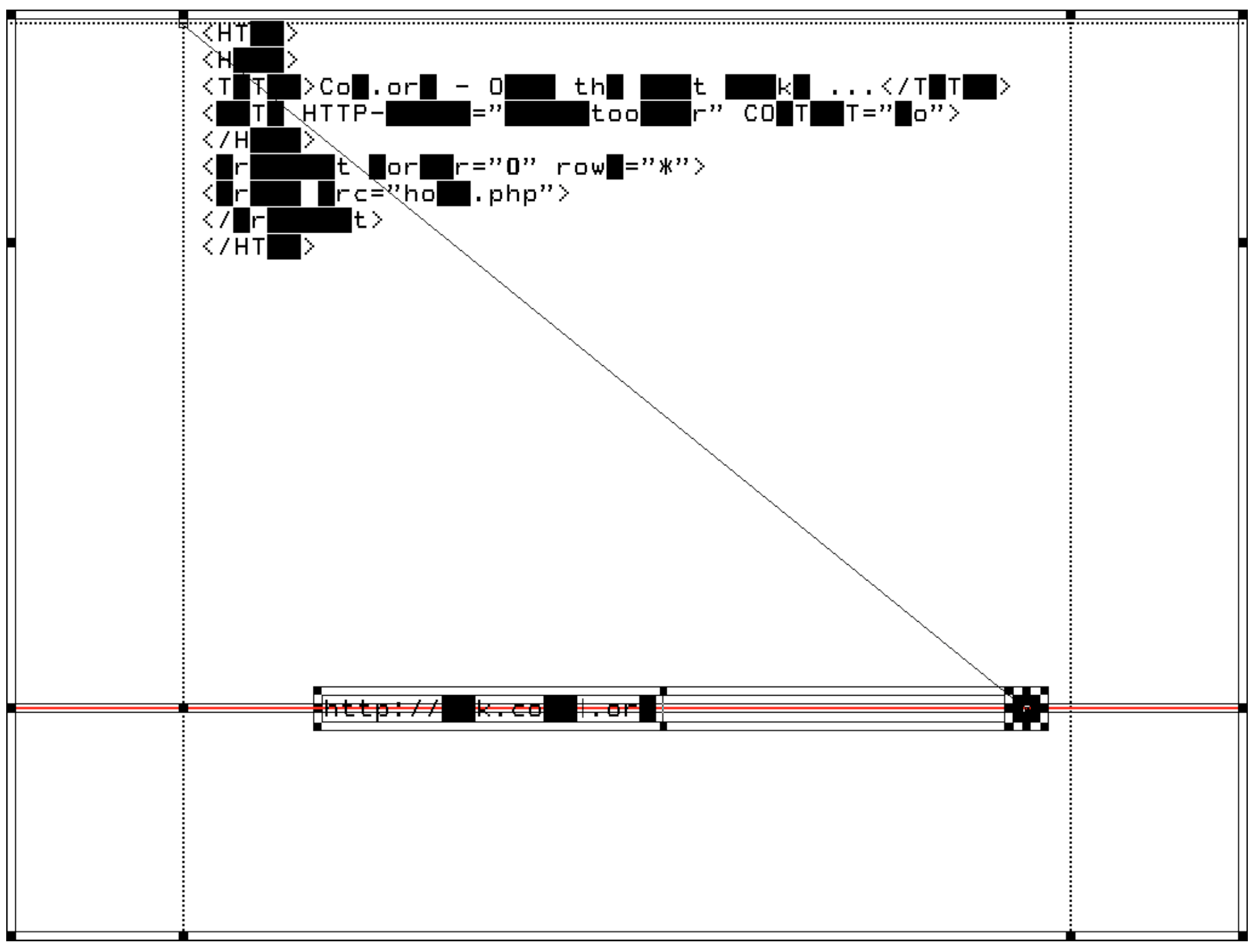
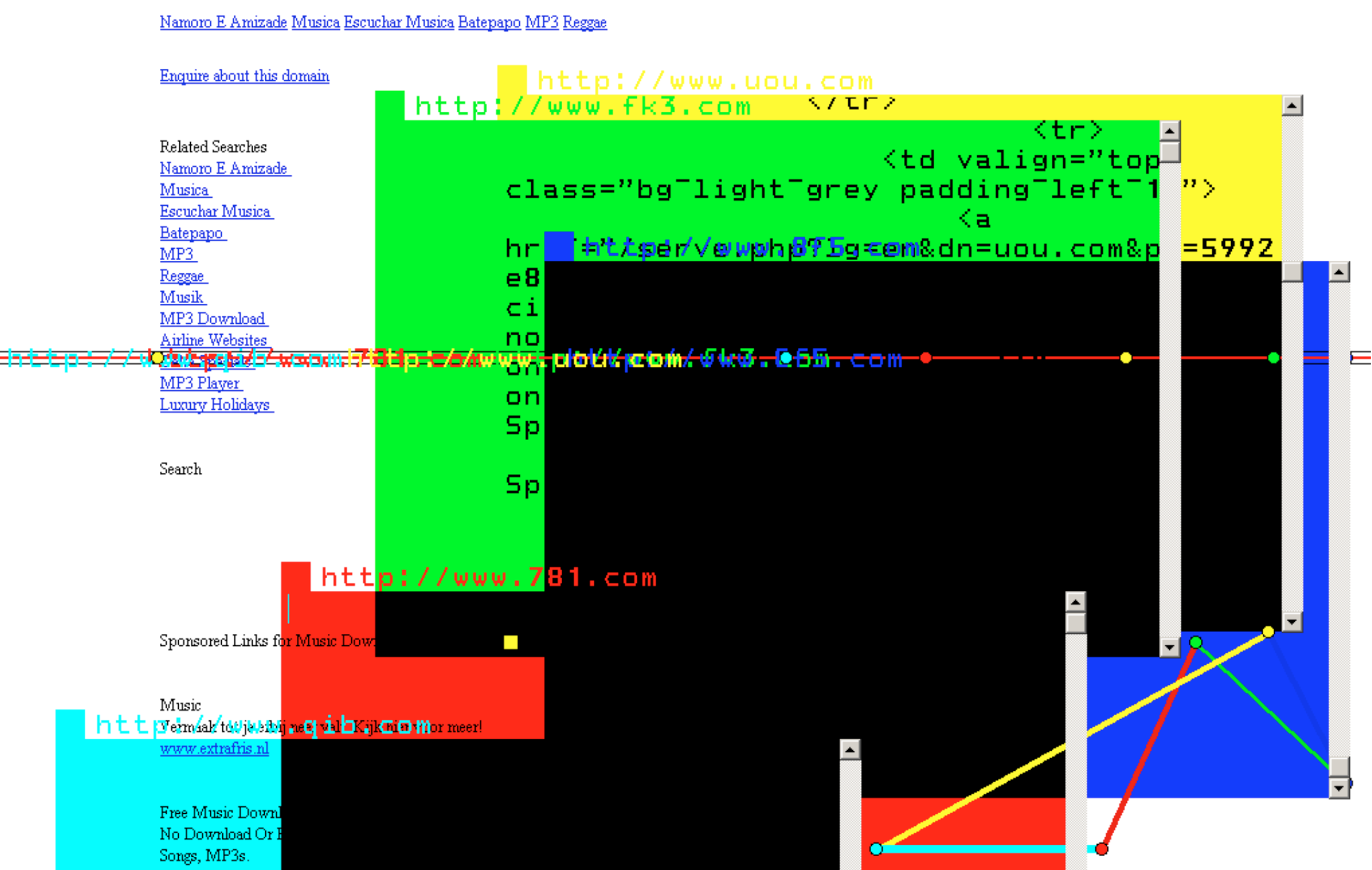

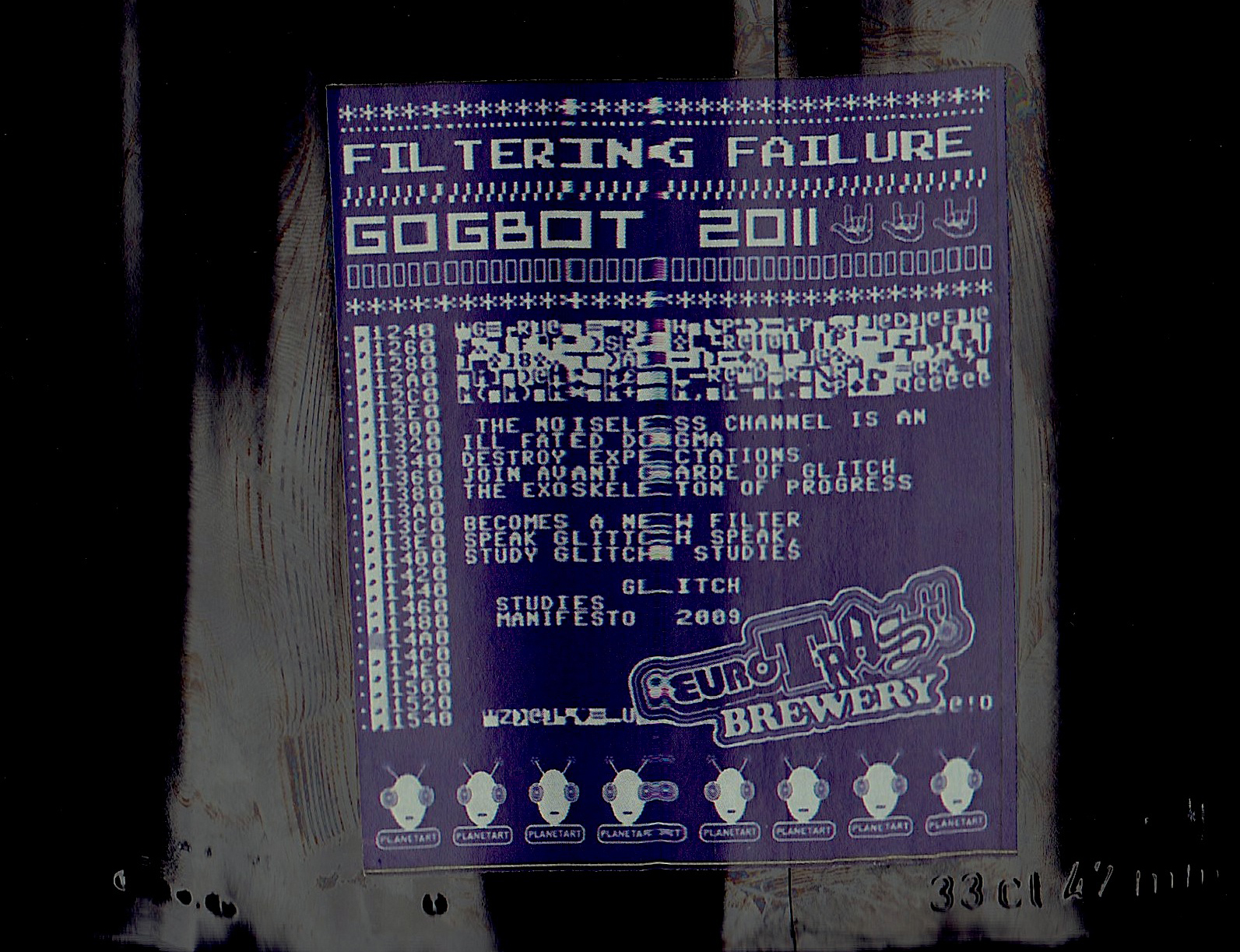 Filtering failure home brew by EuroTrash Brewery
Filtering failure home brew by EuroTrash Brewery
glitch:
Technological definition of glitch:
A short lived fault or break from an expected flow of operation within a digital system.
Glitch Art: The metaphorical, conceptual or Aesthetic use of technological glitches and other resolutions within the realm of art.
Glitch Studies Manifesto (2009/2010, short version)
1. The dominant, continuing search for a noiseless channel has been – and will always be – no more than a regrettable, ill-fated dogma.
Acknowledge that although the constant search for complete transparency brings newer, ‘better’ media, every one of these improved techniques will always possess their own inherent fingerprints of imperfection.
2. Dispute the operating templates of creative practice; fight genres, interfaces and expectations!
Refuse to stay locked into one medium or between contradictions like real vs. virtual, obsolete vs. up-to-date, open vs. proprietary or digital vs. analog. Surf the vortex of technology, the in-between, the art of artifacts!
.
3. Get away from the established action scripts and join the avant-garde of the unknown. Become a nomad of noise artifacts!
The static, linear notion of information-transmission can be interrupted on three occasions: during encoding-decoding (compression), feedback or when a glitch (an unexpected break within the flow of technology) occurs. Noise artists must exploit these noise artifacts and explore the new opportunities they provide.
4. Employ bends and breaks as metaphors for différance. Use the glitch as an exoskeleton for progress.
Find catharsis in disintegration, ruptures and cracks; manipulate, bend and break any medium towards the point where it becomes something new; create glitch art.
5. Realize that the gospel of glitch art also reveals new standards implemented by corruption. Not all glitch art is progressive or something new.
The popularization and cultivation of the avant-garde of mishaps has become predestined and unavoidable. Be aware of easily reproducible glitch effects automated by softwares and plug-ins. What is now a glitch will become a fashion.
6. Force the audience to voyage through the Acousmatic Videoscapes.
Create conceptually synaesthetic artworks, that exploit both visual and aural glitch (or other noise) artifacts at the same time. Employ these noise artifacts as a nebula that shroudsthe technology and its inner workings and that will compel an audience to listen and watch more exhaustively.
7. Rejoice in the critical trans-media aesthetics of glitch artifacts.
Utilize glitches to bring any medium in a critical state of hypertrophy, to (subsequently) criticize its inherent politics.
8. Employ Glitchspeak (as opposed to Newspeak) and study what is outside of knowledge. Glitch theory is what you can just get away with!
Flow cannot be understood without interruption, nor can function without (the possibility of) glitching. This is why glitch studies is necessary.
Longer versions:
︎ old (PDF 2009/2010)|| ︎ new (in Video Vortex reader, 2011)
︎ Japanese translation by osaksa Genki
︎ Polish translation by Bogumiła Piotrowska, Piotr Puldzian Płucienniczak, Aleksandra Pieńkosz
︎ Portuguese translation by Italo Dantas
︎ Turkish translation by Burak Ş. Çelik
︎ Persian translation by Nazila Karimi
︎ Spanish translation for Holobionte
︎ German translation (to come)
1. The dominant, continuing search for a noiseless channel has been – and will always be – no more than a regrettable, ill-fated dogma.
Acknowledge that although the constant search for complete transparency brings newer, ‘better’ media, every one of these improved techniques will always possess their own inherent fingerprints of imperfection.
2. Dispute the operating templates of creative practice; fight genres, interfaces and expectations!
Refuse to stay locked into one medium or between contradictions like real vs. virtual, obsolete vs. up-to-date, open vs. proprietary or digital vs. analog. Surf the vortex of technology, the in-between, the art of artifacts!
.
3. Get away from the established action scripts and join the avant-garde of the unknown. Become a nomad of noise artifacts!
The static, linear notion of information-transmission can be interrupted on three occasions: during encoding-decoding (compression), feedback or when a glitch (an unexpected break within the flow of technology) occurs. Noise artists must exploit these noise artifacts and explore the new opportunities they provide.
4. Employ bends and breaks as metaphors for différance. Use the glitch as an exoskeleton for progress.
Find catharsis in disintegration, ruptures and cracks; manipulate, bend and break any medium towards the point where it becomes something new; create glitch art.
5. Realize that the gospel of glitch art also reveals new standards implemented by corruption. Not all glitch art is progressive or something new.
The popularization and cultivation of the avant-garde of mishaps has become predestined and unavoidable. Be aware of easily reproducible glitch effects automated by softwares and plug-ins. What is now a glitch will become a fashion.
6. Force the audience to voyage through the Acousmatic Videoscapes.
Create conceptually synaesthetic artworks, that exploit both visual and aural glitch (or other noise) artifacts at the same time. Employ these noise artifacts as a nebula that shroudsthe technology and its inner workings and that will compel an audience to listen and watch more exhaustively.
7. Rejoice in the critical trans-media aesthetics of glitch artifacts.
Utilize glitches to bring any medium in a critical state of hypertrophy, to (subsequently) criticize its inherent politics.
8. Employ Glitchspeak (as opposed to Newspeak) and study what is outside of knowledge. Glitch theory is what you can just get away with!
Flow cannot be understood without interruption, nor can function without (the possibility of) glitching. This is why glitch studies is necessary.
Longer versions:
︎ old (PDF 2009/2010)|| ︎ new (in Video Vortex reader, 2011)
︎ Japanese translation by osaksa Genki
︎ Polish translation by Bogumiła Piotrowska, Piotr Puldzian Płucienniczak, Aleksandra Pieńkosz
︎ Portuguese translation by Italo Dantas
︎ Turkish translation by Burak Ş. Çelik
︎ Persian translation by Nazila Karimi
︎ Spanish translation for Holobionte
︎ German translation (to come)
Glitch Moment/um (2011)
Published by the Institute of Network Cultures, December, 2011.
The Glitch Moment/um is the title of a small booklet I published in 2011. In the publication, I describe the moment of encountering a glitch as twofold:
First there is the moment the glitch happens, which is often experienced as an uncanny break of an expected technological flow or threatening loss of control. In this moment, the user or spectator doesn’t know what to expect next. This loss of control soon becomes a catalyst with a certain power as the glitch passes a tipping point. After its tipping point, the glitch is either understood as a failure, or as a development that forces new knowledge onto the user about their presumptions of the technology, or the technologies actual functioning. In case of the latter, the glitch can force the user to reconsider their habitual use of the technology.
After this experience of rupture, the glitch thus moves beyond its sublime momentum and vanishes into a realm of new conditions; it becomes a new mode - either technologically or aesthetically -, while its previous uncanny encounter is now an ephemeral, personal experience of a machine.
︎ From the INC Website
The Glitch Moment/um is the title of a small booklet I published in 2011. In the publication, I describe the moment of encountering a glitch as twofold:
First there is the moment the glitch happens, which is often experienced as an uncanny break of an expected technological flow or threatening loss of control. In this moment, the user or spectator doesn’t know what to expect next. This loss of control soon becomes a catalyst with a certain power as the glitch passes a tipping point. After its tipping point, the glitch is either understood as a failure, or as a development that forces new knowledge onto the user about their presumptions of the technology, or the technologies actual functioning. In case of the latter, the glitch can force the user to reconsider their habitual use of the technology.
After this experience of rupture, the glitch thus moves beyond its sublime momentum and vanishes into a realm of new conditions; it becomes a new mode - either technologically or aesthetically -, while its previous uncanny encounter is now an ephemeral, personal experience of a machine.
︎ From the INC Website
“Glitch culture organizes itself around the investigation and aestheticization of breaks in the conventional flow of information, or meaning within (digital) communication systems.
In this book, Rosa Menkman brings in early information theorists not usually encountered in glitch’s theoretical foundations to refine a signal and informational vocabulary appropriate to glitch’s technological moment/ums and orientations.”
Quadriptych of glitch curation (2010 - 2014)
Between 2010 and 2014 I (co-)curated 4 group shows, dedicated to uncover and understand the many different strata that the realms of glitch art has developed into; from Filtering Failure (2010), focusing on the filtering out and the filtering for failure in the (digital) arts, to the establishment of the genre (Glitch Moment/ums, 2113) and it subsequent sub-genres and genealogies ((ᴳ̇̇̇̇̇̇̇̇̇̇̇̇̇̇̇̇̇̇̇̇̇litch) Art Genealogies, 2013). In Tactical ᴳ̇̇̇̇̇̇̇̇̇̇̇̇̇̇̇̇̇̇̇̇̇litches (2014) Nick Briz and I researched the tactical use of glitch.
Between 2010 and 2014 I (co-)curated 4 group shows, dedicated to uncover and understand the many different strata that the realms of glitch art has developed into; from Filtering Failure (2010), focusing on the filtering out and the filtering for failure in the (digital) arts, to the establishment of the genre (Glitch Moment/ums, 2113) and it subsequent sub-genres and genealogies ((ᴳ̇̇̇̇̇̇̇̇̇̇̇̇̇̇̇̇̇̇̇̇̇litch) Art Genealogies, 2013). In Tactical ᴳ̇̇̇̇̇̇̇̇̇̇̇̇̇̇̇̇̇̇̇̇̇litches (2014) Nick Briz and I researched the tactical use of glitch.



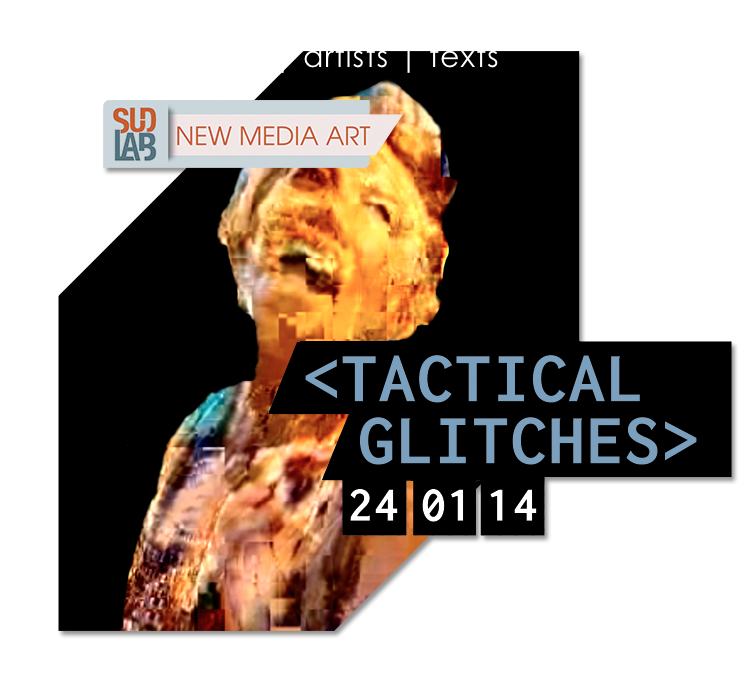
Filtering Failure
28 of February - 1st of April 2010
curated in collaboration with Julian van Aalderen
At Planetart, Amsterdam, Nl.
︎exhibition catalogue
︎Documentation: flickr
“Filtering Failure is about the changing roles of failure in (lo-fi) art. The exhibition aims to show the ambivalence of failure in art and is an ode to everything that can happen after the tipping point of failure - within the realm of pure and unpure, not yet completely commodified or what is understood as glitch art.
Some of the works on show in the exhibition are ironically standardized by repetition and as such exist as a compromise in-between what is ‘cool’ and what is ‘hot’.”
With:
ASDFG.org by Jodi (1998)
{} by Nullsleep (2011)
6 yrs of Currupt by Benjamin Gaulon (2005-2011)
Glitch: a new mode of textile design by Notendo
GlitchNes 2.0 by no-carrier (2009)
Bended video mixer by Karl Klomp (2009)
TBF1b by Gijs Gieskes (2011)
Codec by Paul Davis (2009)
QTzrk by Jon Satrom (2011)
Welcome to Videogramo by Videogramo (2009-2011)
28 of February - 1st of April 2010
curated in collaboration with Julian van Aalderen
At Planetart, Amsterdam, Nl.
︎exhibition catalogue
︎Documentation: flickr
“Filtering Failure is about the changing roles of failure in (lo-fi) art. The exhibition aims to show the ambivalence of failure in art and is an ode to everything that can happen after the tipping point of failure - within the realm of pure and unpure, not yet completely commodified or what is understood as glitch art.
Some of the works on show in the exhibition are ironically standardized by repetition and as such exist as a compromise in-between what is ‘cool’ and what is ‘hot’.”
With:
ASDFG.org by Jodi (1998)
{} by Nullsleep (2011)
6 yrs of Currupt by Benjamin Gaulon (2005-2011)
Glitch: a new mode of textile design by Notendo
GlitchNes 2.0 by no-carrier (2009)
Bended video mixer by Karl Klomp (2009)
TBF1b by Gijs Gieskes (2011)
Codec by Paul Davis (2009)
QTzrk by Jon Satrom (2011)
Welcome to Videogramo by Videogramo (2009-2011)
(ᴳ̇̇̇̇̇̇̇̇̇̇̇̇̇̇̇̇̇̇̇̇̇litch) Art Genealogies
19.03.2113 - 23.03.2113
curated in collaboration with LEAP (Daniel Franke, John McKiernan). At LEAP, Berli, De
︎exhibition catalogue
︎Documentation: Triangulation
︎Documentation: flickr
“Over the last 10 years, glitch, a perceived break from a flow in a technological system, has become a more and more popular subject matter in the (new) media arts. Today, Glitch Art is indeed so popular that theorists often feel the need to categorize and historicize the genre. Dada, Futurism and de Stijl are just a couple of historical Avant-Garde movements that have been used to delineate ‘the history’ of Glitch Art. But this teleological principle defies and confines glitch’ procedural and fragmented nature.
The exhibition (ᴳ̇̇̇̇̇̇̇̇̇̇̇̇̇̇̇̇̇̇̇̇̇litch) Art Genealogies does not focus on glitch art from a historically singular point of view, nor does it attempt to give an all encompassing historical or causal overview. Instead, (ᴳ̇̇̇̇̇̇̇̇̇̇̇̇̇̇̇̇̇̇̇̇̇̐litch) Art Genealogies recognizes the complexities and processes of glitch arts’ many affiliated, interconnected and (geo-)fragmented discourses: it tries to shine a light on why particular glitches develop social-political momentum in a specific point in time and how this momentum changes over time.
(ᴳ̐litch) Art Genealogies is an effort to show just five of the many threaded glitch discourses that play a role in the curators subjective understanding of glitch art at this present. In these threads, generations of different communities of (visual) glitch artists and their working methods, conceptual themes and politics are (inter)connected and/or juxtaposed.”
With (organised per cluster)
#NES circuitbending esthetic
The Punch-Out! Variations by noteNdo, (2007)
glitchNES by no_carrier, (2009)
#Enigmatic Realities
Max Miptex by Julian Oliver, (2001)
YPTOLM by Alex Myers, (2012)
RANDOM SEED by Rick Silva, (2013)
Psych and Seek by Kevin Carey, (2013)
LVLS by Nick Kegeyan, (2013)
nowhere? by Bryan Peterson, (2012)
#GUI Politics and Prose
OS Desktop from the My%Desktop, (2002-2010) series by JODI, (2009)
Plugin Beachball Success by jon.satrom, (2012)
Post_it_desktop_Feedback by miYö van Stenis, (2012)
spectrumcube by Emilio Gomariz, (2012)
#Psychedelia and New Psychedelia
AURAE by Sabrina Ratte, (2012)
Youth In Trouble - The Presets by Yoshi sodeoka, (2012)
gridSol_altar2 by A Bill Miller, (2012)
Sect 7 N-E by Anton Marini vs Rutt Etra, (2013)
skymappr by Brenna Murphy, (2012)
#Authorship // Openness
General Motors by Phil morton, (1970)
ᶀƦ⟲Ⱪ3ᥒ ⟒Ɍ3𐆖𐆖𐆖⟳ⱤĐƵ (AKA: Broken Records: Hystories i Of Noise && Dirty New Media by jonCates, (2011)
Apple Computersby Nick Briz, (2013)
19.03.2113 - 23.03.2113
curated in collaboration with LEAP (Daniel Franke, John McKiernan). At LEAP, Berli, De
︎exhibition catalogue
︎Documentation: Triangulation
︎Documentation: flickr
“Over the last 10 years, glitch, a perceived break from a flow in a technological system, has become a more and more popular subject matter in the (new) media arts. Today, Glitch Art is indeed so popular that theorists often feel the need to categorize and historicize the genre. Dada, Futurism and de Stijl are just a couple of historical Avant-Garde movements that have been used to delineate ‘the history’ of Glitch Art. But this teleological principle defies and confines glitch’ procedural and fragmented nature.
The exhibition (ᴳ̇̇̇̇̇̇̇̇̇̇̇̇̇̇̇̇̇̇̇̇̇litch) Art Genealogies does not focus on glitch art from a historically singular point of view, nor does it attempt to give an all encompassing historical or causal overview. Instead, (ᴳ̇̇̇̇̇̇̇̇̇̇̇̇̇̇̇̇̇̇̇̇̇̐litch) Art Genealogies recognizes the complexities and processes of glitch arts’ many affiliated, interconnected and (geo-)fragmented discourses: it tries to shine a light on why particular glitches develop social-political momentum in a specific point in time and how this momentum changes over time.
(ᴳ̐litch) Art Genealogies is an effort to show just five of the many threaded glitch discourses that play a role in the curators subjective understanding of glitch art at this present. In these threads, generations of different communities of (visual) glitch artists and their working methods, conceptual themes and politics are (inter)connected and/or juxtaposed.”
With (organised per cluster)
#NES circuitbending esthetic
The Punch-Out! Variations by noteNdo, (2007)
glitchNES by no_carrier, (2009)
#Enigmatic Realities
Max Miptex by Julian Oliver, (2001)
YPTOLM by Alex Myers, (2012)
RANDOM SEED by Rick Silva, (2013)
Psych and Seek by Kevin Carey, (2013)
LVLS by Nick Kegeyan, (2013)
nowhere? by Bryan Peterson, (2012)
#GUI Politics and Prose
OS Desktop from the My%Desktop, (2002-2010) series by JODI, (2009)
Plugin Beachball Success by jon.satrom, (2012)
Post_it_desktop_Feedback by miYö van Stenis, (2012)
spectrumcube by Emilio Gomariz, (2012)
#Psychedelia and New Psychedelia
AURAE by Sabrina Ratte, (2012)
Youth In Trouble - The Presets by Yoshi sodeoka, (2012)
gridSol_altar2 by A Bill Miller, (2012)
Sect 7 N-E by Anton Marini vs Rutt Etra, (2013)
skymappr by Brenna Murphy, (2012)
#Authorship // Openness
General Motors by Phil morton, (1970)
ᶀƦ⟲Ⱪ3ᥒ ⟒Ɍ3𐆖𐆖𐆖⟳ⱤĐƵ (AKA: Broken Records: Hystories i Of Noise && Dirty New Media by jonCates, (2011)
Apple Computersby Nick Briz, (2013)
Glitch Moment/ums
8 June - 28 July 2013
curated in collaboration with Furtherfield
At Furtherfield, London, Uk.
︎website
︎Documentation: We Make Money Not Art, Prosthetic Knowledge, flickr.
“To study glitch is to engage a study of the succeeding turns and changes of failure and functionality, revolutions and ossification. A movement also critiqued in Antonio Roberts work ‘What is Revolution?’.
My first encounter with a piece of glitch art came hand in hand with a feeling of shock. What had once been a first person shooter was now a broken, pixelated vortex of confusion (Jodi, Untitled Game, 2006). I was lost and in awe, trying to come to terms with an experience that seemed unforgivable. But finally, these ruins of expected functionality revealed a new opportunity, a spark of creative energy that showed that something new had taken shape. I felt questions emerge; what is this utterance, and how was it created? Is this perhaps ...a glitched video environment? But once I had named the glitch, the momentum -the glitch- was gone ...and in front of my eyes suddenly a new form had emerged.
These days I try to understand glitches as a manifold of moment/ums, having their meaning depend on time, discourse and context from which they are perceived. First, the glitch is a break from an expected flow within a (digital) system. Here, it is perceived as an absence of (expected) functionality and often experienced as an uncanny, threatening loss of control. This moment itself then can become a catalyst, with a certain momentum - a power that forces knowledge about actual and presumed media flow, onto the viewer. What was voided of meaning, becomes interpreted and gains new meaning.
But as I wrote in the catalogue for the (ᴳ̇̇̇̇̇̇̇̇̇̇̇̇̇̇̇̇̇̇̇̇̇litch) Art Genealogies exhibition I organized at LEAP Berlin earlier this year: [the meanings of] these glitches are constantly subject to revision: their language systems emerge, their meanings shift, idioms ossify and standardize into a fashion or genre.
...and then they change again.
The glitch thus heralds a transformative power - a potential to modulate or productively damage the norms of (techno-)culture.“
With:
Empty Spinning Circle become Full (part b) (2012) from the Further Abstract series by Alma Alloro
One Square in colors from the Further Abstract series by Alma Alloro (2012)
untitled [screencaptures] by Melissa Barron (2010)
The Glitch Codec Tutorial by Nick Briz (2011)
KindleGlitched by Benjamin Gaulon (2012)
Thoreau Glitch Portrait by José Irion Neto (2011)
Copyright Atrophy by Antonio Roberts (2013)
What Revolution? by Antonio Roberts (2011)
Beyond Yes and No by Ant Scott (2013)
0P3NR3P0
8 June - 28 July 2013
curated in collaboration with Furtherfield
At Furtherfield, London, Uk.
︎website
︎Documentation: We Make Money Not Art, Prosthetic Knowledge, flickr.
“To study glitch is to engage a study of the succeeding turns and changes of failure and functionality, revolutions and ossification. A movement also critiqued in Antonio Roberts work ‘What is Revolution?’.
My first encounter with a piece of glitch art came hand in hand with a feeling of shock. What had once been a first person shooter was now a broken, pixelated vortex of confusion (Jodi, Untitled Game, 2006). I was lost and in awe, trying to come to terms with an experience that seemed unforgivable. But finally, these ruins of expected functionality revealed a new opportunity, a spark of creative energy that showed that something new had taken shape. I felt questions emerge; what is this utterance, and how was it created? Is this perhaps ...a glitched video environment? But once I had named the glitch, the momentum -the glitch- was gone ...and in front of my eyes suddenly a new form had emerged.
These days I try to understand glitches as a manifold of moment/ums, having their meaning depend on time, discourse and context from which they are perceived. First, the glitch is a break from an expected flow within a (digital) system. Here, it is perceived as an absence of (expected) functionality and often experienced as an uncanny, threatening loss of control. This moment itself then can become a catalyst, with a certain momentum - a power that forces knowledge about actual and presumed media flow, onto the viewer. What was voided of meaning, becomes interpreted and gains new meaning.
But as I wrote in the catalogue for the (ᴳ̇̇̇̇̇̇̇̇̇̇̇̇̇̇̇̇̇̇̇̇̇litch) Art Genealogies exhibition I organized at LEAP Berlin earlier this year: [the meanings of] these glitches are constantly subject to revision: their language systems emerge, their meanings shift, idioms ossify and standardize into a fashion or genre.
...and then they change again.
The glitch thus heralds a transformative power - a potential to modulate or productively damage the norms of (techno-)culture.“
With:
Empty Spinning Circle become Full (part b) (2012) from the Further Abstract series by Alma Alloro
One Square in colors from the Further Abstract series by Alma Alloro (2012)
untitled [screencaptures] by Melissa Barron (2010)
The Glitch Codec Tutorial by Nick Briz (2011)
KindleGlitched by Benjamin Gaulon (2012)
Thoreau Glitch Portrait by José Irion Neto (2011)
Copyright Atrophy by Antonio Roberts (2013)
What Revolution? by Antonio Roberts (2011)
Beyond Yes and No by Ant Scott (2013)
0P3NR3P0
Tactical ᴳ̇̇̇̇̇̇̇̇̇̇̇̇̇̇̇̇̇̇̇̇̇litches
24 January - 24 Feb 2014
curated in collaboration with Nick Briz
At Sudlab, Portici, It
︎website
︎Facebook page
︎artist profiles
︎press release
︎Documentation: flickr, facebook, ref. material: Nick Briz on Tactical Glitch
“Technologies come with expectations, but these expectations aren’t always met. An mp3 might skip and crackle. A computer monitor might—for a moment—show shards instead of windows. A website might hickup on load and scramble its contents. When this happens, we call this unexpected occurrence a glitch. While these moments are rarely anticipated and usually unwelcome, they are at times intentionally provoked. The result of this intentional and creative instigation is what we often call GLITCH ART.”
With:
glitchr by Laimonas Zakas (2011) (LT)
Corrupted Miley Cyrus by Theo Darst (2010) (USA)
sOS by Pox Party (2011) (USA)
Glti.ch Karaoke (2014) (UK - ROK)
New Vulnerability (2012) UCNV (JP)
Ana Hui Zhang (CN)
Eleccion Guate by Sherpa (2011) (GT)
Corrupt.desktop (retail poisoning) by Benjamin Gaulon (2012) (FR)
A woman under the influence by Tatjiana Marusic (2002) (CH / DE / HR)
I see you by Nancy Mauro-Flude (2003) (AUS)
0P3NR3P0
24 January - 24 Feb 2014
curated in collaboration with Nick Briz
At Sudlab, Portici, It
︎website
︎Facebook page
︎artist profiles
︎press release
︎Documentation: flickr, facebook, ref. material: Nick Briz on Tactical Glitch
“Technologies come with expectations, but these expectations aren’t always met. An mp3 might skip and crackle. A computer monitor might—for a moment—show shards instead of windows. A website might hickup on load and scramble its contents. When this happens, we call this unexpected occurrence a glitch. While these moments are rarely anticipated and usually unwelcome, they are at times intentionally provoked. The result of this intentional and creative instigation is what we often call GLITCH ART.”
With:
glitchr by Laimonas Zakas (2011) (LT)
Corrupted Miley Cyrus by Theo Darst (2010) (USA)
sOS by Pox Party (2011) (USA)
Glti.ch Karaoke (2014) (UK - ROK)
New Vulnerability (2012) UCNV (JP)
Ana Hui Zhang (CN)
Eleccion Guate by Sherpa (2011) (GT)
Corrupt.desktop (retail poisoning) by Benjamin Gaulon (2012) (FR)
A woman under the influence by Tatjiana Marusic (2002) (CH / DE / HR)
I see you by Nancy Mauro-Flude (2003) (AUS)
0P3NR3P0
 The institutions of Resolution Disputes [iRD] call attention to media resolutions. While a ’resolution’ generally simply refers to a standard (measurement) embedded in the technological domain, the iRD reflect on the fact that a resolution is indeed a settlement (solution), but at the same time a space of compromise between different actors (objects, materialities and protocols) who dispute their stakes (framerate, number of pixels etc.) within the growing digital territories.
The institutions of Resolution Disputes [iRD] call attention to media resolutions. While a ’resolution’ generally simply refers to a standard (measurement) embedded in the technological domain, the iRD reflect on the fact that a resolution is indeed a settlement (solution), but at the same time a space of compromise between different actors (objects, materialities and protocols) who dispute their stakes (framerate, number of pixels etc.) within the growing digital territories.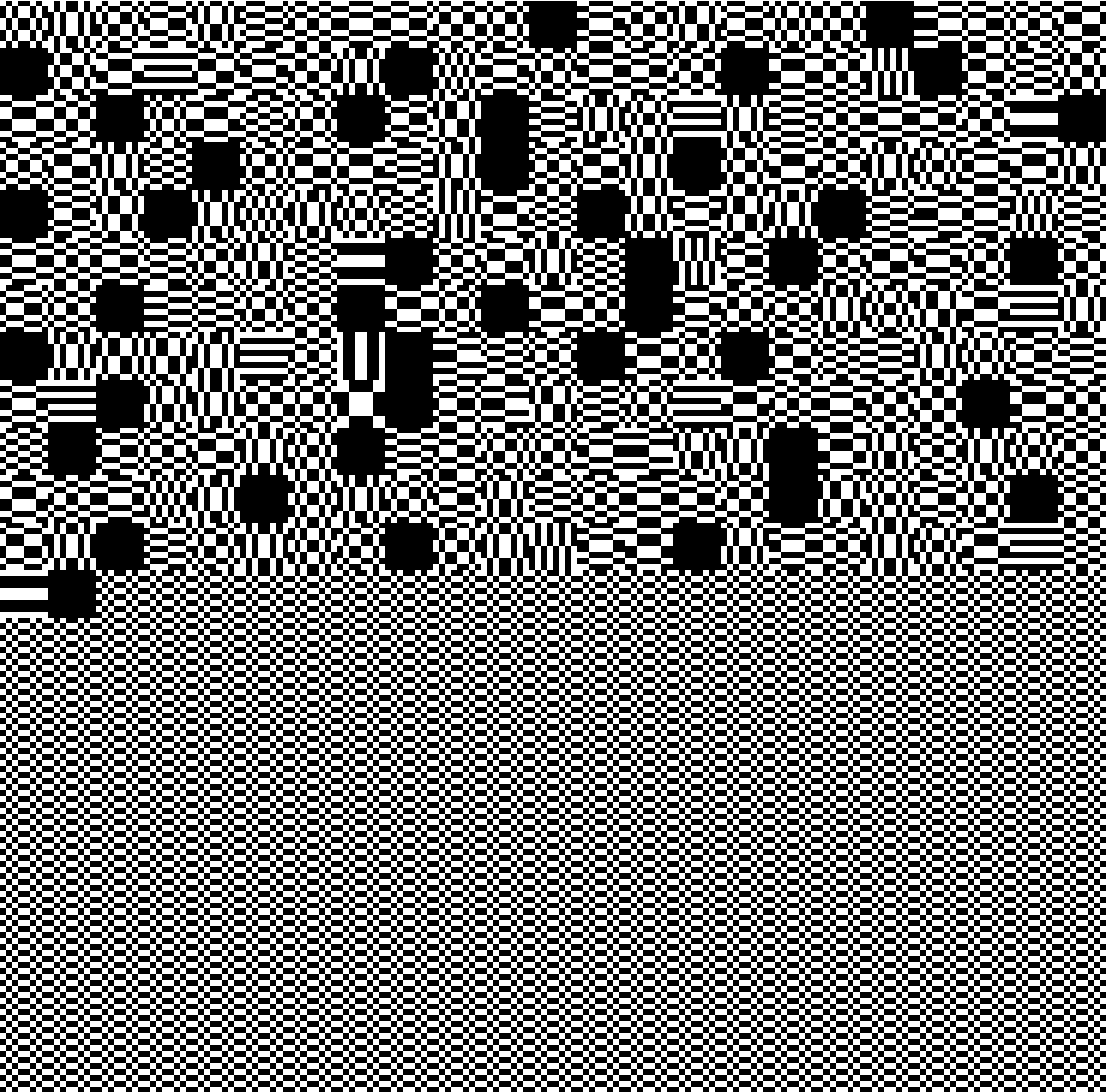 Resolutions inform both machine vision and human ways of perception. They shape the material of everyday life ubiquitously. They do this not just as an “interface effect”* but as hyperopic lens, obfuscating any other possible alternative resolution from the users media literacy.
Resolutions inform both machine vision and human ways of perception. They shape the material of everyday life ubiquitously. They do this not just as an “interface effect”* but as hyperopic lens, obfuscating any other possible alternative resolution from the users media literacy.
⠀▦▦▦▦▦▦▦▤▤▣▣▣▤ ⠀▦▦▦▦▦▦▤▤▣▣▣▤▤ ⠀▦▦▦▦▦▤▤▣▣▣▤▤▦ ⠀▦▦▦▦▤▤▣▣▣▤▤▦▦ ⠀▦▦▦▤▤▣▣▣▤▤▦▦▦ ⠀▦▦▤▤▣▣▣▤▤▦▦▦▦ ⠀▦▤▤▣▣▣▤▤▦▦▦▦▦ ⠀▤▤▣▣▣▤▤▦▦▦▦▦▦ ⠀▤▣▣▣▤▤▦▦▦▦▦▦▦ ⠀▤▣▣▣▤▤▦▦▦▦▦▦▦ ⠀▤▤▣▣▣▤▤▦▦▦▦▦▦ ⠀▦▤▤▣▣▣▤▤▦▦▦▦▦ ⠀▦▦▤▤▣▣▣▤▤▦▦▦▦ ⠀▦▦▦▤▤▣▣▣▤▤▦▦▦ ⠀▦▦▦▦▤▤▣▣▣▤▤▦▦ ⠀▦▦▦▦▤▤▣▣▣▤▤▦▦ ⠀▦▦▦▦▦▤▤▣▤▤▦▦▦ ⠀▦▦▦▦▦▦▤▣▤▦▦▦▦ ⠀▦▦▦▦▦▦▦▣▦▦▦▦▦ ⠀▦▦▦▦▦▦▦▣▦▦▦▦▦
RESOLUTIONS INFORM BOTH MACHINE VISION AND HUMAN WAYS OF PERCEPTION.
THEY ARE THE MATERIAL OF EVERYDAY LIFE(1),
UBIQUITOUS, WHILE HUMANS HAVE GONE MOSTLY OBLIVIOUS. iRD STRIVES FOR A RADICAL MATERIALIST re-(RE-)DISTRIBUTION OF THE SENSIBLE.(2)
Even the most glitchy-glitch is just the vernacular of an already present, not evenly distributed future. When we walk inside these futures we find ourselves momentarily stuck inside a pocket of ambiguous ‘freespace’, a fountain of inspiration and curiosity. Until we find - momentary - resolve.
Resolutions inform both machine vision and human ways of perception. Rules, or protocols, change data in order to store, show, move and connect between technologies. Protocols, together with objects and their materialities, form the resolutions that make technology run smoothly(3). But these resolutions form not only a solution, but also a compromise between multiple underlying media properties.
A resolution is not a neutral facility but carries historical, economical and political ideologies. The cost of all of these media protocols is that we have gradually become unaware of the choices and compromises they represent. We are collectively suffering from technological hyperopia where these qualities have moved beyond a fold of perspective.
RESOLUTIONS INVOLVE < DETERMINATIONS >/* –AND LOST ALTERNATIVES– */
Have we become bad at constructing our own resolutions, or are we just oblivious to resolutions and their inherent compromises?
The iRD calls attention to media resolutions and does not /just/ aestheticize their formal qualities or denounce them as ‘Evil’ (4). iRD intends to expose methods of ‘creative problem creating’ (5), to bring authorship back to the actors involved during the building of a ‘resolution’.
While the gospel of resolutions sings about new standards implemented through corruption, iRD displays forms of vernacular resistance based on misleading, false, or ambiguous data and maybe a chanting jabberwocky, venturing along the bootleg trails above a Sea of Fog.
1. Michel de Certeau, The Practice of Everyday Life, 1984.
2. Jacques Ranciere, The Politics of Aesthetics, 2004.
3. Alexander Galloway, Protocol, 2006.
4. Matthew Fuller, Andrew Goffey, Evil Media, 2012.
5. jon.satrom, creative problem creating, 2013. ︎ Transfer gallery page

︎ A tour of Internet Yami-ichi, the offline Internet flea market (featuring the i.R.D.) by Regine Debatty @We Make Money Not Art.
institutions of Resolution Disputes [ i.R.D. ], long version:
Even though the iRD mimics an institute, in reality it is not a classic, institutional organ. Instead, the iRD multiplexes the term institution, by revisiting its usage in the late 1970s. In this context, formulated by Joseph Goguen and Rod Burstall, institution refers to a slightly ‘more compound framework’, that deals with the growing complexities, connecting different logical systems (such as databases and programming languages) within computer sciences. A main result of these non-logical institutions is that different logical systems can be glued together at a substrata level, forming illogical frameworks through which computation also takes place.
Inspired by the idea of hyper functional, yet illogical frameworks, the iRD is dedicated to researching the interests of anti-utopic, obfuscated, lost and unseen, or simply ‘too good to be implemented’ resolutions.
The institutions of Resolution Disputes [iRD] call attention to media resolutions. While a resolution generally simply refers to a determination of functional settings in the technological domain, the iRD stresses that a resolution is indeed a settlement (solution), but at the same time also entails a space of compromise between different actors (objects, materialities, and protocols) in dispute over norms (frame rate, number of pixels etc.). Common settings can ossify as generally accepted requirements or de facto standards, while others standards are notated as norms by standardizing organizations such as the International Organization for Standardization. We call this progress*.
Resolutions are non-neutral standard settings that involve political, economical, technological and cultural values and ideologies, embedded in the genealogies and ecologies of our media. In an uncompromisingly fashion, quality (fidelity) speed (governed by efficiency) volume (generally encapsulated in tiny-ness for hardware and big when it comes to data) and profit (economic or ownership) have been responsible for plotting the vector of progress. This dogmatic configuration of belief x action has made upgrade culture a great legitimizer of violence, putting its insufficient technological resolutions to rest. While a resolution can thus be understood as a manifold assemblage of common, but contestable standards, it should also be considered in terms of other options; those that are unknown and unseen, obsolete and unsupported.
Resolutions inform both machine vision and human ways of perception. They shape the material of everyday life ubiquitously. As the media landscape becomes more and more compound, or in other words, an heterogenous assemblage in which one technology never functions on its own, its complexities have moved beyond a fold of everyday settings. Technological standards have compiled into resolution clusters; media platforms that form resolutions like tablelands, flanked by steep cliffs and precipices looking out over obscure, incremental abysses that seem to harbor a mist of unsupported, obsolete norms.
The platforms of resolution now organize perspective. They are the legitimizers of both inclusion and exclusion of what can not be seen or what should be done, while the fog, the other possibilities become more and more obscure.
It is important to realize that the resolutions platforms are not inherently Evil*. They can be impartial. It is important that we unpack these resolutions and note that they are conditioning our perception. A culture that adheres to only one or few platforms of resolutions supports nepotism amongst standards. These clusters actively engage simpleness and mask the issues at stake, savoring stupidity, and are finally bound to escalate into glutinous tech-fascism.
The question is, have we become unable to construct our own resolutions, or have we become oblivious to them?
Resolutions work not just as an interface effect* but as hyperopic lens, obfuscating any other possible alternative resolutions from the users screens and media literacy. When we speak about video, we only ever refer to a four cornered moving image. Why do we not consider video with more or less corners, timelines, or soundtracks. Fonts are monochrome; they do not come with their own textures, gradients or chrominance and luminance mapping. Text editors still follow the lay-out of paper; there is hardly any modularity within written word technologies. Even ghosts, the figments of our imagination, have been conditioned to communicate exclusively through analogue forms of noise (the uncanny per default), while aliens communicate through blocks and lines (the more intelligent forms of noise). We are hiking the resolution platforms comfortably. Unknowingly suffering from technological hyperopia, We have lost track of the compromises that are at stake inside our resolutions and are staring at the screens showing us mirage after mirage.
A resolution is the lens through which constituted materialities become signifiers in their own right. They resonate the tonality of the hive mind and constantly transform our technologies into informed material vernaculars.
Technology is evolving faster than we, as a culture can come to terms with. This is why determinations such as standards are dangerous; they can preclude the alternative. The radical digital materialist believes in informed materiality*: while every string of data is ambiguously fluid and has the potential to be manipulated into anything, every piece of information functions within /*adhesive/ encoding, contextualization and embedding. Different forms of ossification slither into every crevice of private life, while unresolved, ungoverned free space seems to be slipping away. There lies the power of standardization.
We are in need for a re-(Re-)Distribution of the Sensible.
The iRD offers a liminal space for resolution studies. Resolution studies is not only about the effects of technological *progress or about the esthetization of the scales of resolution. Resolution studies is a studies on how resolution embeds the tonalities of culture, in more than just its technological facets.
Resolution studies researches the standards that could have been in place, but are not. As a form of vernacular resistance, based on the concept of providing ambiguous resolutions, the iRD employs the liminal resolution of the screen as a looking-glass. Here, hyperopia is fractured and gives space to myopia, and visa versa. This is how iRD exposes the colors hidden inside the grey mundane objects* of everyday life.
The iRD is not a Wunderkammer for dead media*, but a foggy bootleg trail for vernacular resistance.
Progress has fathered many dead technologies. A Wunderkammer, or curiosity cabinet of media resolutions would celebrate these dead objects by trapping them inside a glass bell, relieving them in-definitely of their action radius. While the iRD adheres to the settlements of governing media resolutions, it also welcomes ventures along the bootleg trails of the tactical undead*. These undead move beyond resolution, through the literacies of the governing techno cultures, into liminal spaces. They follow the wild and uncanny desire paths that cut through sensitive forms and off-limit areas into speculative materialities*. They threaten the status quo of secure forms of media and provide the ambiguity that is so necessary for inspiration, action and curiosity*.
The iRD believes that methods of creative problem creation* can bring authorship back to the layer of resolution setting. Resolution theory moves against what sometimes seems like an unsolvable puzzle of flattening reality, while the iRD might seem like a one way trail straight into the Sea of Fog and towards the abyss of techno-norms. But it could also be a modular framework that opens and expands standards through inspection and reflection. As any good theory of media, resolution theory is a theory on literacy. Literacy of the machines, the people, the people creating the machines and the people being created by the machines. Through challenging the platforms of resolution, it can help the wanderer to scale actively between these states of hyperopia and myopia. It can uncover crystal cities of fog as well as shine a light on the soon to be distributed futures. Here we can mine for the timonds.
︎ official Transfer Gallery page
︎ An in depth all info PDF about this work
︎ Resolution Challenge!
︎ the essay
BACKGROUND INFORMATION
The i.R.D. first opened in 2015 at Transfer Gallery New York, where they took the form of 5 institutions (statements) encoded in DCT.
During this initial opening, the i.R.D. shed light on the different complexities of of compression ecologiesn by showcasing their different complexities.
Since their 2015 initiation, the i.R.D. have been actively disseminating information on Resolutions and their inherent compromises in the form of interventions via:
- annual flower laying at the ISO premises during the World Standard Day to commemorate resolutions that have become obsolete
- offering resolution certification through the Resolution Challenge,
- active archivation of standards through the DCT DeCalibration Target and the DCT Repo.
- The i.R.D. are also responsible for initiating the DeCalibration Army.
Works from the different ecologies of compression complexities that were on display in the initial opening of the i.R.D.:
⌁ :: Analogue :: Collapse of PAL / Beyond Resolution
• :: Dots/pixels :: Un/Resolved
━ :: Line :: WHITEOUT
▩ :: Block :: DCT
⌇ :: Wavelet :: Myopia
⟗ :: Vectors :: Shredded Hologram Pen/Rose
COVERAGE
‘Resolution Disputes: A Conversation Between Rosa Menkman and Daniel Rourke’, Furtherfield
“By using the terms ‘obfuscation’ and ‘dysfunction’ you are invoking a will – perhaps on your part, but also on the part of the resolutions themselves – to be recognised. I love that gesture. I can hear the objects in iRD speaking out; making themselves heard, perhaps for the first time.”
‘Accidental Vision’, Postmatter“The boundaries of the screen are challenged in Rosa Menkman’s new exhibition at TRANSFER Gallery, using technological error to disrupt expectations.”
‘Having Cryptic Conversations about Encrypted Graphics’, The Creator’s Project“ Rosa Menkman’s new media artwork celebrates both the computer screen glitch and the actual resolution of the image it’s trying—and failing—to represent, highlighting the accidents in the “free space” between them.”
 The question is, ‘have we become unable to construct our own resolutions, or have we become oblivious to them?’ Either way we are in need for another re-“(Re-)Distribution of the Sensible”.
The question is, ‘have we become unable to construct our own resolutions, or have we become oblivious to them?’ Either way we are in need for another re-“(Re-)Distribution of the Sensible”. iRD intend to impose methods of “creative problem creation” to bring authorship back to the layer of setting a 'resolution'. The radical digital materialist believes in an “informed materiality”; while every string of data is ambiguously fluid and has the potential to be manipulated into anything, every piece of information functions within /adhesive*/ encoding, contextualization and embedding (etc).
iRD intend to impose methods of “creative problem creation” to bring authorship back to the layer of setting a 'resolution'. The radical digital materialist believes in an “informed materiality”; while every string of data is ambiguously fluid and has the potential to be manipulated into anything, every piece of information functions within /adhesive*/ encoding, contextualization and embedding (etc). Through iRDs tactics beyond resolution, the otherwise grey mundane objects of everyday-life show their colors. iRD is not a wunderkabinet of dead media, but a foggy bootleg trails for vernacular resistance.
Through iRDs tactics beyond resolution, the otherwise grey mundane objects of everyday-life show their colors. iRD is not a wunderkabinet of dead media, but a foggy bootleg trails for vernacular resistance.▣▣▣▣▣▣▣▣▣▣▣▣▣
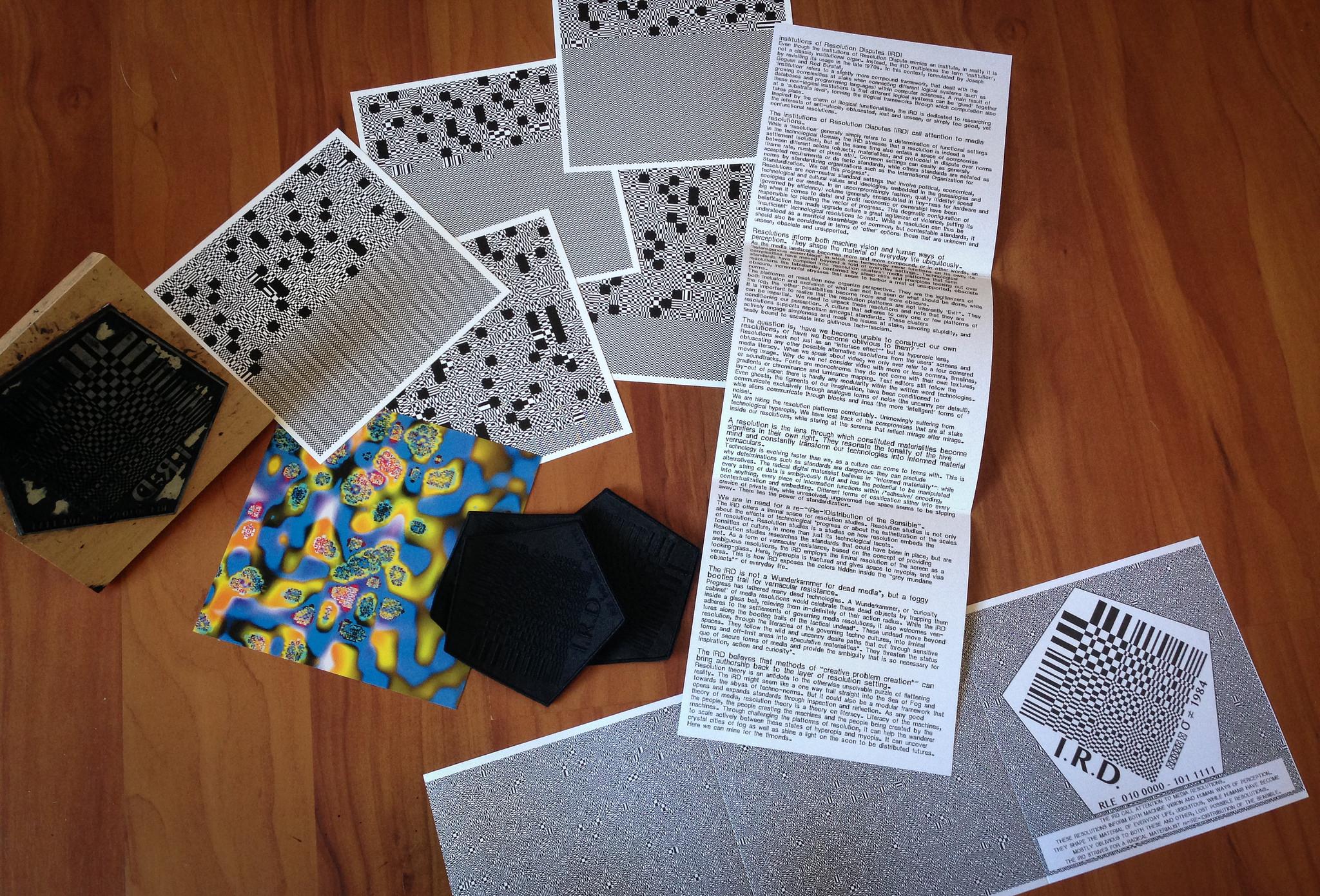
WHITEOUT (2020)
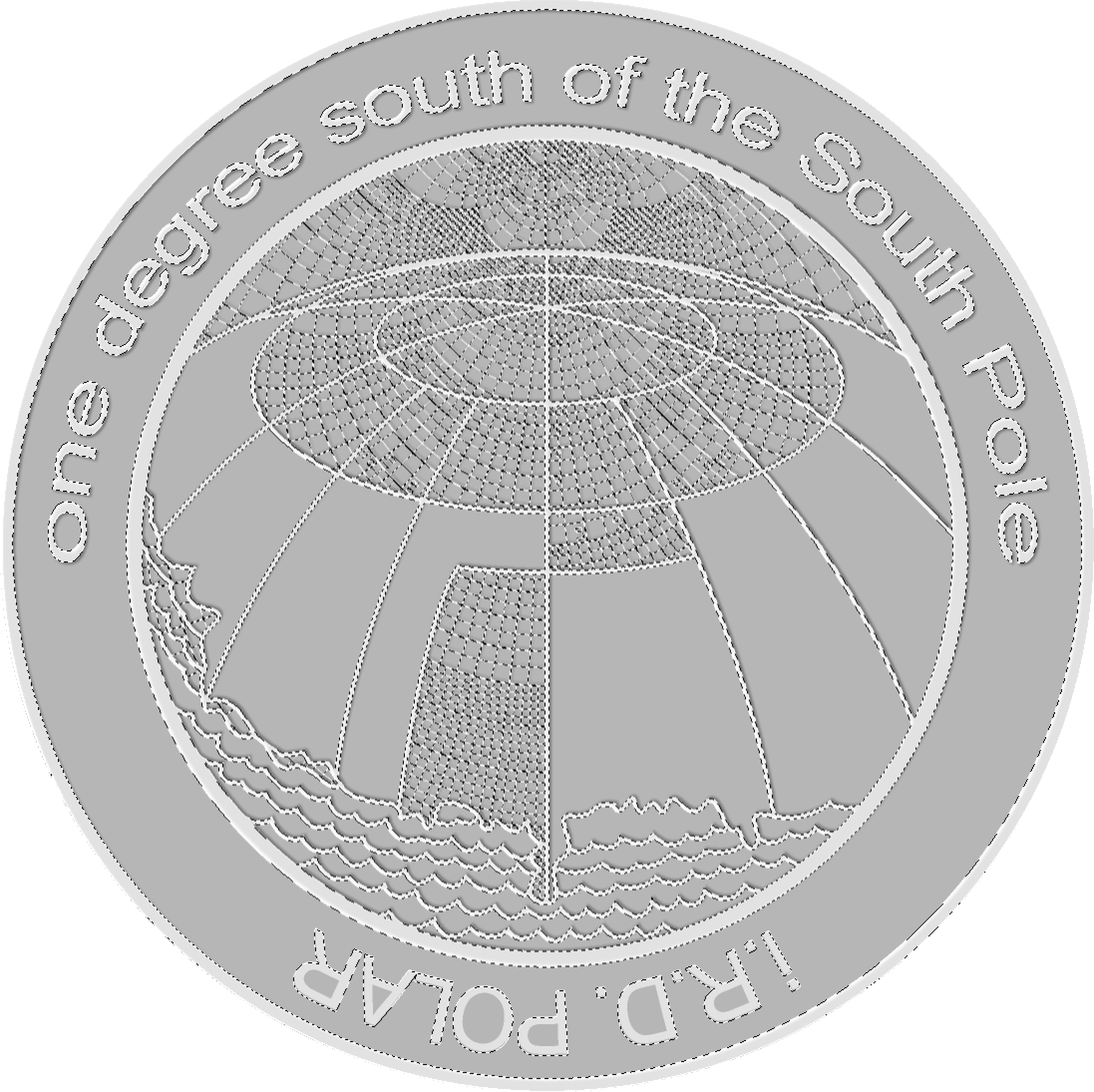
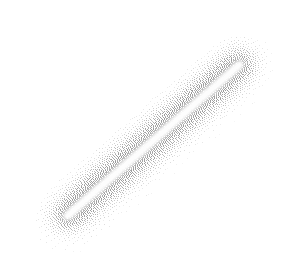
︎ read: PDF Essay as published by Photoresearcher
Whiteout describes an exhausting journey to the top of a mountain during a snowstorm.
As I make my way up onto the mountain, I experience a loss of my physical sensations; leading to an inability to see, hear, or orient myself. While at first I still know what direction I am going, I slowly lose my spatial dimensions. I experience oversaturation by nothing - as the environment starts to offer itself in new ways.
I ask myself
what does it mean, to move without visual or auditory references?
To physically plot a course when there is no conventional sense of direction or even horizon?
When feeling oversaturated, by a lack of anything, what other ways can I still use to sense?
☰☰☰☰☰☰☰☰☰☰☰☰☰☰☰☰☰☰☰☰☰
Whiteout is based on an essay writtem by myself, originally written for AX15, a book by Mario de Vega, who also did the sound starting from around minute 9.
The stroboscopic images are all from the slides of the 2 year colloquium “Resolution Studies”
Whiteout is inspired by my ARTS AT CERN residency, a climb of the Brocken mountain (Blocksberg) and a voyage on board the Chilean Armada to Antartica.
︎ ARTFORUM write up: ArtForum, December ‘21, page 207
Whiteout describes an exhausting journey to the top of a mountain during a snowstorm.
As I make my way up onto the mountain, I experience a loss of my physical sensations; leading to an inability to see, hear, or orient myself. While at first I still know what direction I am going, I slowly lose my spatial dimensions. I experience oversaturation by nothing - as the environment starts to offer itself in new ways.
I ask myself
what does it mean, to move without visual or auditory references?
To physically plot a course when there is no conventional sense of direction or even horizon?
When feeling oversaturated, by a lack of anything, what other ways can I still use to sense?
☰☰☰☰☰☰☰☰☰☰☰☰☰☰☰☰☰☰☰☰☰
Whiteout is based on an essay writtem by myself, originally written for AX15, a book by Mario de Vega, who also did the sound starting from around minute 9.
The stroboscopic images are all from the slides of the 2 year colloquium “Resolution Studies”
Whiteout is inspired by my ARTS AT CERN residency, a climb of the Brocken mountain (Blocksberg) and a voyage on board the Chilean Armada to Antartica.
︎ ARTFORUM write up: ArtForum, December ‘21, page 207




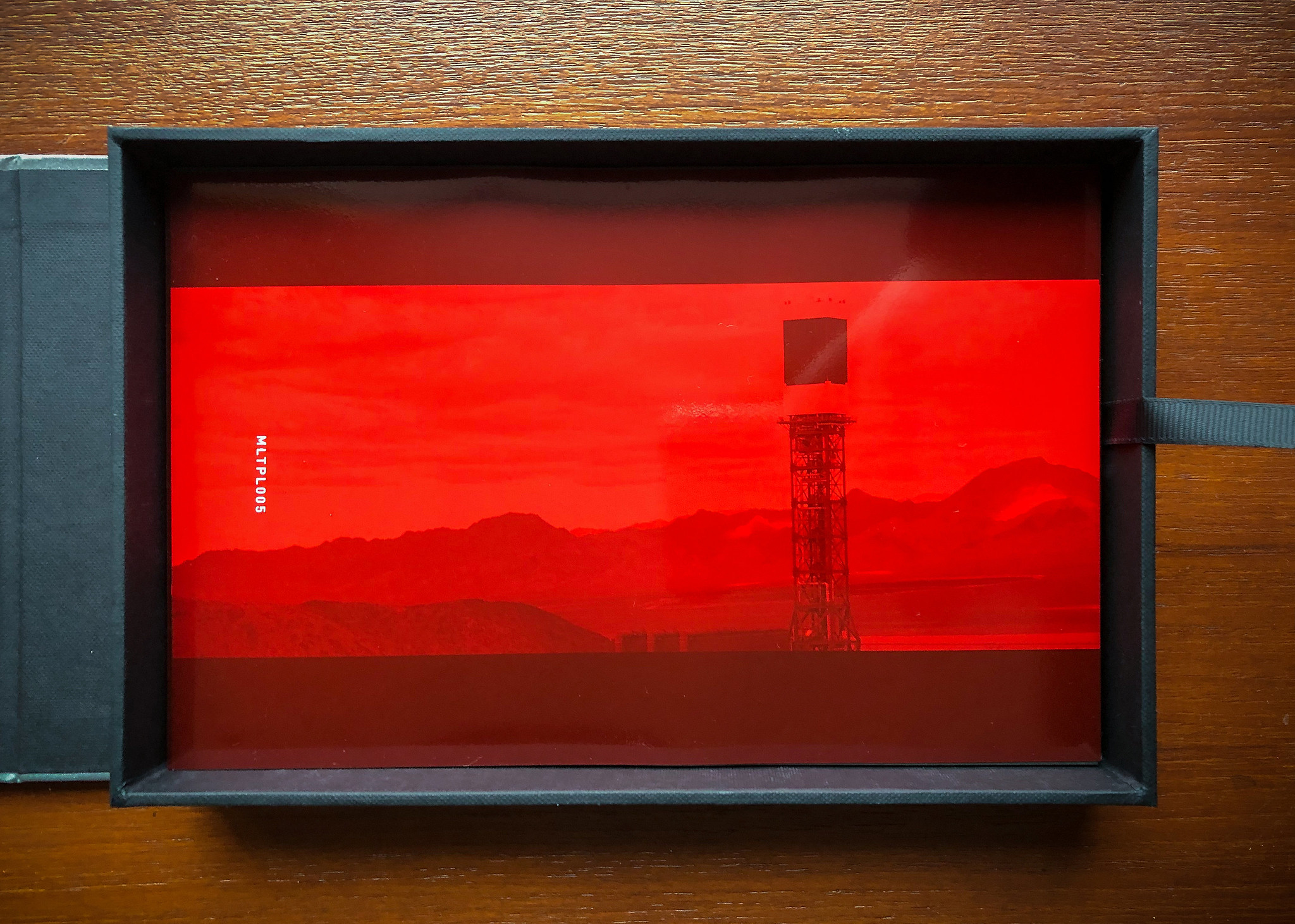







AX15 A book by Mario de Vega, for which I wrote the essay and also made some of the photos.





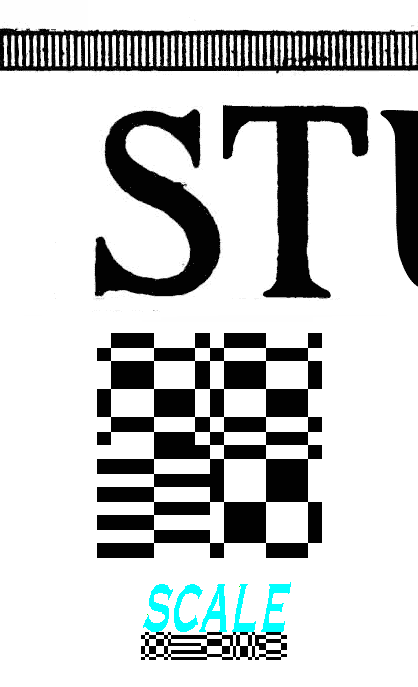


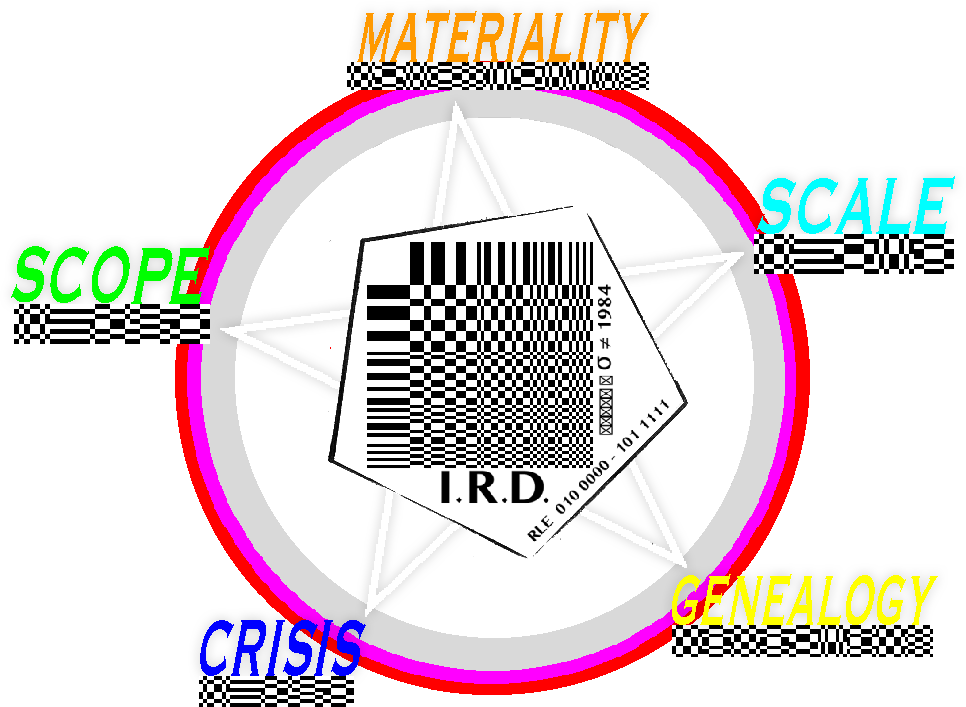

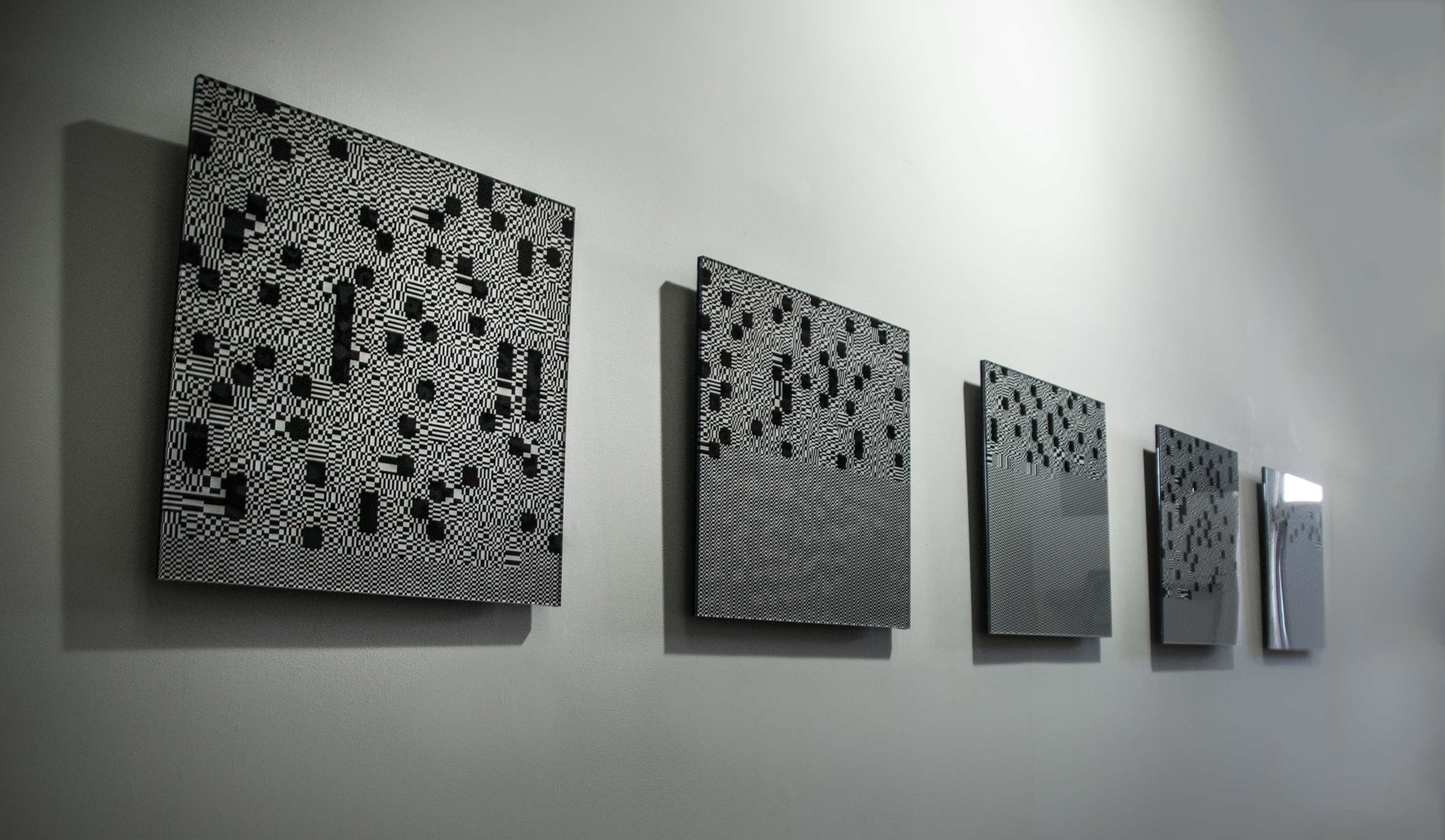 5 institutions encoded in DCT. A publication in 5 Acrylics / postcards /
5 institutions encoded in DCT. A publication in 5 Acrylics / postcards /